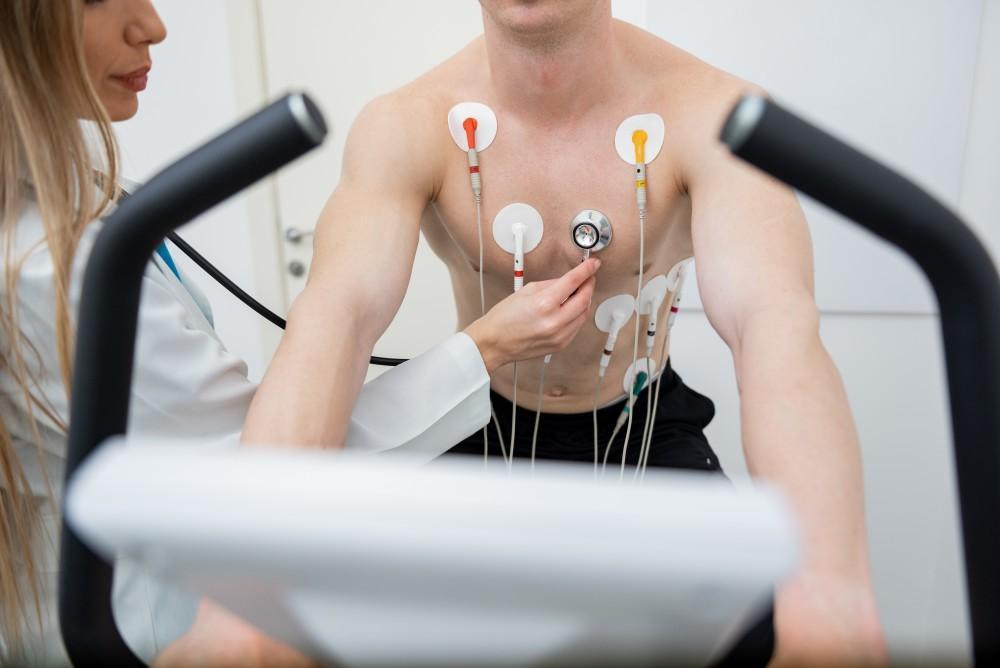
What We Can Do Now to Prevent a Stroke Later in Life?

Strokes — a leading cause of death and disability in America — happen every 40 seconds. Every three minutes and 11 seconds, someone dies from a stroke.
These two statistics are nothing short of alarming, but the good news is that you can take action to reduce your risk of having a stroke.
Below, Dr. Henock Saint-Jacques and our team at Harlem Cardiology share seven strategies that you can implement today to reduce your risk of having a stroke later in life.
1. Keep your blood pressure in check
Having a systolic blood pressure that is 10-mm Hg higher than average can increase your risk of stroke by 20% This makes having high blood pressure one of the top risk factors for strokes.
High blood pressure can cause a stroke because the increased force can damage the walls of blood vessels in your brain, making them more prone to rupture.
Damaged blood vessels can also become blocked by blood clots, which can then disrupt blood flow to your brain and cause a stroke.
Even though high blood pressure doesn’t cause any noticeable symptoms now, it’s important to manage it now to reduce your risk of a stroke (and heart attack for that matter) later in life.
Regular blood pressure monitoring (at home or in our office), eating a healthy diet, and prescribed medications can help keep your blood pressure in a healthy range.
2. Adopt heart-healthy lifestyle habits
Strokes and heart health are intricately connected. About 17.5% of cardiovascular disease-related deaths are from a stroke. To reduce your risk of both of these conditions, you can adopt heart-healthy lifestyle habits — habits that are also good for your brain.
Exercise daily
Regular physical activity strengthens your heart and improves circulation, but it also helps reduce several risk factors for strokes, including high blood pressure, high cholesterol, and diabetes.
Aim for at least five 30-minute workouts per week — that will help you reach the American Heart Association’s recommended goal of 150 minutes of moderate exercise a week.
Eat a heart-friendly diet
A heart-friendly diet is also a brain-friendly diet. An ideal diet is rich in fresh fruits and vegetables, 100% whole grains, lean proteins, and healthy fats.
Leafy greens, walnuts, citrus fruits, fatty fish like salmon, and berries are powerhouses when it comes to preventing strokes. For example, just one cup of leafy greens reduces your risk of ischemic stroke by 17%!
What you don’t eat is just as important. Omit (or at least limit) refined foods, foods high in sodium, foods that contain trans fats or saturated fats, fried foods, processed meat, and sugary snacks.
3. Lose weight
Being overweight increases your stroke risk by contributing to conditions like diabetes and high blood pressure. Even small, sustainable weight loss can make a big difference. For example, even just a 5% weight loss can start to help regulate your blood pressure — a top stroke risk factor.
To put that another way, if you weigh 200 pounds, that’s just a 10-pound weight loss.
4. Control diabetes
High blood sugar can wreak havoc on your entire body, including your blood vessels, and unfortunately, people with diabetes have a greater risk of having a stroke. In fact, 28% of people who have a stroke have diabetes.
If you have diabetes — or even if you have prediabetes — work with your provider to manage the condition. Diabetes can be managed with diet and exercise, and if needed, medication. (The same diet that is good for your heart and brain is also good for controlling blood sugar!)
5. Quit smoking
Smoking thickens your blood (so clots are more likely), increases your blood pressure, and reduces the amount of oxygen in your blood.
The good news? Quitting reduces your stroke risk — and it’s never too late to quit.
6. Curb your alcohol intake
Excessive alcohol raises blood pressure and contributes to an irregular heartbeat, both of which can lead to strokes. Stick to moderate drinking at the very least — one drink per day for women, two for men.
7. Stay on top of preventive care
Regular checkups help detect and address risk factors like hypertension, high cholesterol, or irregular heart rhythms early — and our team can help do just that. In addition to screenings, our team can review your personal and family history to create a personalized stroke prevention plan.
Here at Harlem Cardiology, our team of experts — which includes cardiologists, neurologists, interventional cardiologists, family medicine physicians, and electrophysiologists — can help you manage the conditions that increase your risk of having a stroke.
Whether you need blood pressure screenings or surgical treatment to prevent a recurrent stroke, our team has what you need under one roof here in our East Harlem, New York, office.
To get started, give us a call at 646-381-2181 or request an appointment online.
You Might Also Enjoy...


3 Ways Your Cholesterol Numbers Predict Heart Disease Risk

What 5 Warning Signs of a Heart Attack That Often Get Ignored?

Are Varicose Veins a Health Concern?

What's the Difference Between "Good" and "Bad" Cholesterol?



